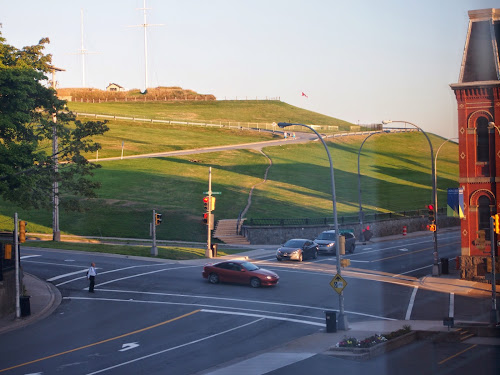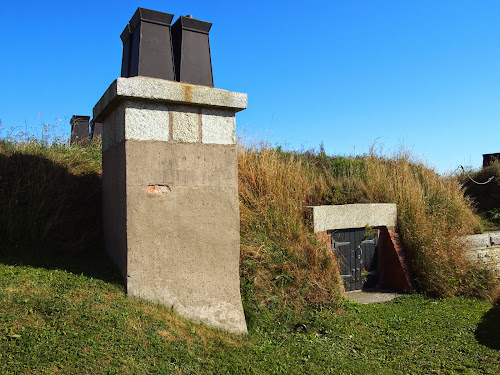We launched ourselves towards Canada, pulling out of the parking lot of our hotel in Bangor, Maine, at the ungodly hour of 5:15 AM on September 4th. We had planned a more leisurely start, but revised the timetable to make a noon ferry out of Saint John, New Brunswick, when Jim noticed that we were consistently driving east, not north, on our way to our jumping off point of Bangor, Maine. Checking time zones, we found that crossing the border meant losing an hour and – oops – we had forgotten to budget time for dealing with border formalities. So, 5:15 it was. We didn’t want to miss our ferry to Nova Scotia.
We made the ferry with time to spare and after a three hour ferry ride, arrived at the port of Digby, Nova Scotia, having enjoyed a lunch of fried bacon-wrapped Digby scallops enroute. They were delicious.
From Digby, we zig zagged our way across Nova Scotia to the eastern coast and the town of Lunenburg to take a peak and grab dinner before heading to Halifax for the night. Lunenburg is a UNESCO World Heritage Site, one of only two towns in North America designated as such. On the way, we began to notice that maritime Canada is very big, has lots and lots of water of all types, and not so many people.
We arrived after nightfall in Halifax and had trouble finding our hotel due to a lack of good street signage and our inability to find the Halifax Citadel, a huge fort smack in the middle of the old part of the city, that was supposed to be right by our hotel. How could we have missed such a thing?
Imagine our surprise when we opened our curtains the next morning. The British built the Citadel into a large hill overlooking Halifax harbor in the first half of the 19th century to protect the Halifax naval base from a land attack by American troops. The harbor is the largest natural harbor in the world, next to Sydney, and the naval base was of exceptional strategic importance to the British Empire. It’s a very impressive fort, complete with sniper posts built into the earthenworks.
The Empire knew how to build things. At the foot of the fort, the town clock has been ticking away for over 200 years.
We also enjoyed the weeping elm trees and the lush fussiness of the Victorian Public Gardens and an ice cream cone in the harborfront area before heading out of town on our way to the overnight ferry that would take us to Newfoundland.
The hiking paths in Victoria Park in Truro are kind of insane, but lead to a nice waterfall in a glen. We had stopped to stretch our legs on the way to the tip of Cape Breton Island to catch the ferry.











